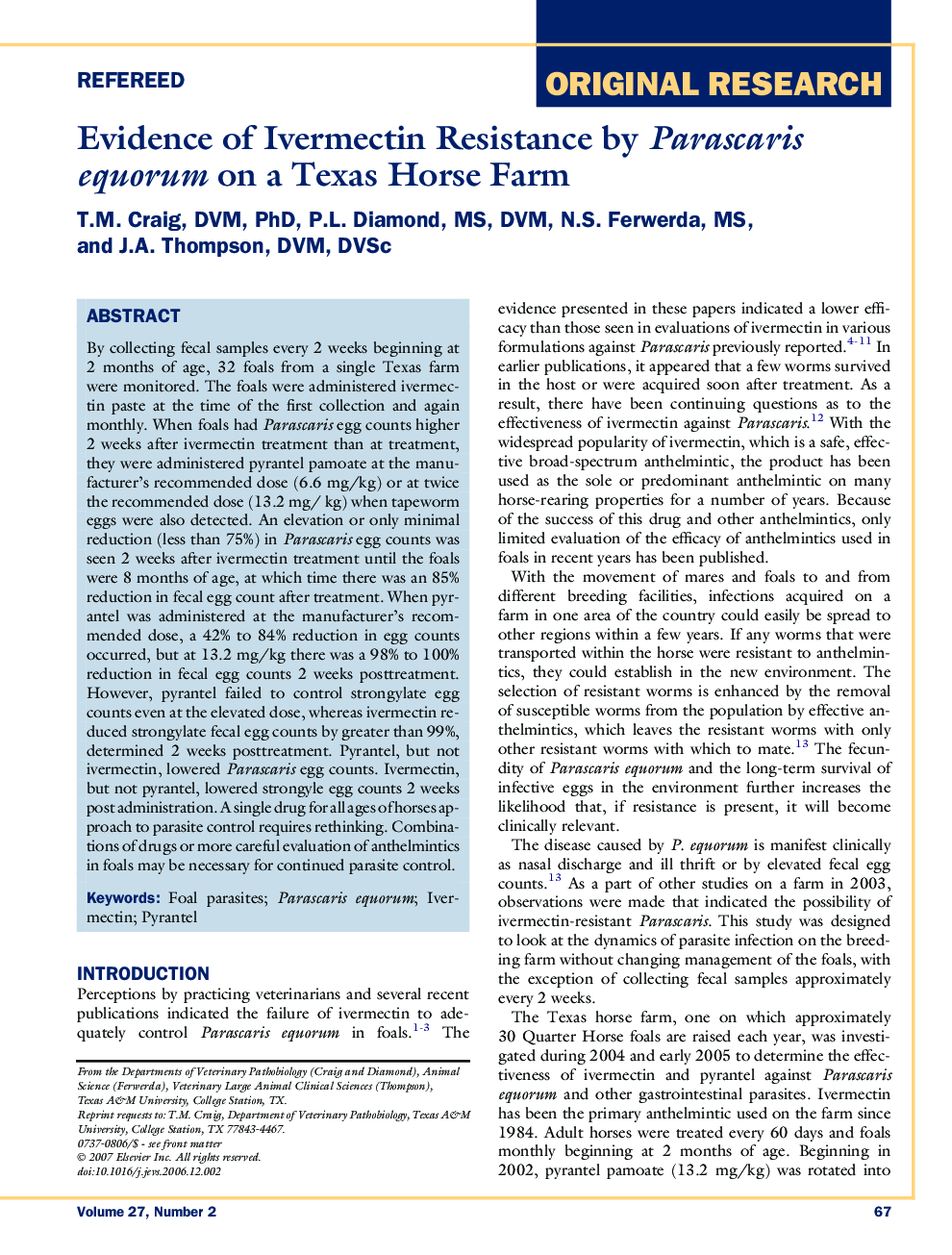| Article ID | Journal | Published Year | Pages | File Type |
|---|---|---|---|---|
| 2396514 | Journal of Equine Veterinary Science | 2007 | 5 Pages |
By collecting fecal samples every 2 weeks beginning at 2 months of age, 32 foals from a single Texas farm were monitored. The foals were administered ivermectin paste at the time of the first collection and again monthly. When foals had Parascaris egg counts higher 2 weeks after ivermectin treatment than at treatment, they were administered pyrantel pamoate at the manufacturer's recommended dose (6.6 mg/kg) or at twice the recommended dose (13.2 mg/ kg) when tapeworm eggs were also detected. An elevation or only minimal reduction (less than 75%) in Parascaris egg counts was seen 2 weeks after ivermectin treatment until the foals were 8 months of age, at which time there was an 85% reduction in fecal egg count after treatment. When pyrantel was administered at the manufacturer's recommended dose, a 42% to 84% reduction in egg counts occurred, but at 13.2 mg/kg there was a 98% to 100% reduction in fecal egg counts 2 weeks posttreatment. However, pyrantel failed to control strongylate egg counts even at the elevated dose, whereas ivermectin reduced strongylate fecal egg counts by greater than 99%, determined 2 weeks posttreatment. Pyrantel, but not ivermectin, lowered Parascaris egg counts. Ivermectin, but not pyrantel, lowered strongyle egg counts 2 weeks post administration. A single drug for all ages of horses approach to parasite control requires rethinking. Combinations of drugs or more careful evaluation of anthelmintics in foals may be necessary for continued parasite control.
